Butterflies and Moths
Media
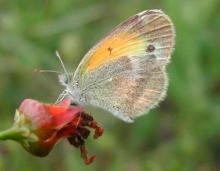
Species Types
Scientific Name
Nathalis iole
Description
Each year, dainty sulphurs arrive in Missouri from regions to our south. They are small compared to other sulphur butterflies. The wingspan of the largest individuals reaches only about 1¼ inches.
Media

Species Types
Scientific Name
Pyrisitia lisa (syn. Eurema lisa)
Description
The little yellow is just what the name says it is. The lower side is yellow with a few spots, including two tiny black spots on the basal hindwing and, often, a larger rusty spot on the hindwing margin.
Media

Species Types
Scientific Name
Colias eurytheme
Description
One of the most common butterflies in Missouri, the orange sulphur often gathers in numbers in moist places.
Media

Species Types
Scientific Name
Lycaena hyllus (syn. Hyllolycaena hyllus; Lycaena thoe)
Description
The bronze copper occurs in localized colonies in throughout northern and western Missouri. Look for it May through October in wet, open, grassy areas.
Media
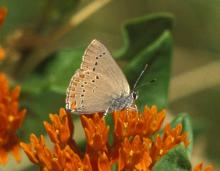
Species Types
Scientific Name
Satyrium titus (syn. Harkenclenus titus)
Description
The coral hairstreak is the only Missouri hairstreak lacking hindwing “tails” and without a blue spot on the outer hindwing edge.
Media
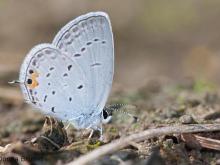
Species Types
Scientific Name
Cupido comyntas
Description
You can find the eastern tailed-blue in Missouri in prairies, fields, vacant lots, and yards — virtually any open, sunny place.
Media
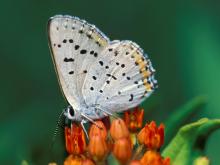
Species Types
Scientific Name
Lycaena dione (formerly Gaeides xanthoides dione)
Description
The gray copper is locally common in the western half of Missouri, where it flies in June and July. Look for it in moist, grassy, open areas during those months.
Media
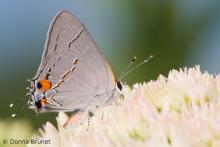
Species Types
Scientific Name
Strymon melinus
Description
The gray hairstreak, a small gray butterfly, is widespread throughout the United States. In Missouri, there are three or more broods each year.
Media

Species Types
Scientific Name
Celastrina ladon
Description
The spring azure is among the first butterflies of the year. It occurs in a variety of habitats. The early spring appearance helps you identify it.
Media
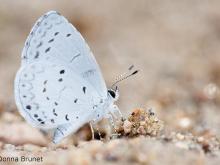
Species Types
Scientific Name
Celastrina neglecta
Description
Formerly considered the same species as the spring azure, the summer azure can be identified, in large part, by the season when you see it.
See Also


Media

Species Types
Scientific Name
About 1,500 species in North America north of Mexico
Description
Adult caddisflies are mothlike. Their larvae are aquatic and build portable, protective cases out of local materials, including grains of sand, bits of leaves and twigs, and other debris.
Media

Species Types
Scientific Name
Corydalus cornutus
Description
Adult eastern dobsonflies are huge and mothlike, with large wings and a weak, fluttery flight. The fiercely predaceous aquatic larvae, called hellgrammites, are well-known to anglers, who often use them as bait.
About Butterflies and Moths in Missouri
Butterflies, skippers, and moths belong to an insect order called the Lepidoptera — the "scale-winged" insects. These living jewels have tiny, overlapping scales that cover their wings like shingles. The scales, whether muted or colorful, seem dusty if they rub off on your fingers. Many butterflies and moths are associated with particular types of food plants, which their caterpillars must eat in order to survive.





















